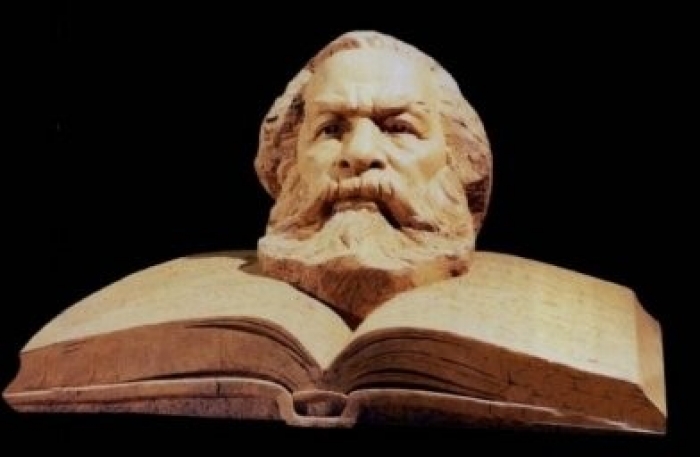
Some Notes on Buddha, Marx, and Babasaheb Ambedkar
Babasaheb Ambedkar read Marx extensively. It is evident from his writings and speeches. He not only read Marx, but also studied it critically as he saw various movements inspired by Marx when he was alive. He witnessed the Russian revolution of 1917 and the Chinese revolution of 1949. Babasaheb Ambedkar was concerned with the issue of “labour” and he started his first political party around the issue of “labour” as the broad category. He looked at the communist manifesto, along with Roussou’s social contract, Pope Leo III writing on capital and labour, and Mill’s liberty as programmatic documents for the labour issue.
He snubbed the Brahmin Marxists when he talked about Brahminism and Capitalism as the two enemies of the labouring masses. His reading made him think that had Marx born in India, he would write Das Capital in a different fashion. And According to Babasaheb Ambedkar, if Lenin was born in India he would attack the cultural/religious foundation of India.
Though he read Marx widely and deeply, he has issues with Indian Marxists (read the club of Brahmin boys) who did not pay any attention to the annihilation of caste, but only dwelt in the speculative theories and lost their head in the “New Philosophy” and “New Language”. The Hindu Proletariat is a contradiction as the laboring classes were divided gradually in the fixed social order, their unity was impossible to achieve against their common oppressor. The Caste system is the division of labourers.
He also visualised different scenes after the communist revolution in India and came to the conclusion after a rigorous analysis that the untouchability might end, but the untouchables will remain the same. He cited the example of Telangana in which in 1940, a violent revolution of the Kammas, Reddys, and the Dalits freed the land from the landholders, but the Kammas and Reddys did not give land to the Dalits, and they were only ready to double their wages. Hundreds of Dalits died in this mobilization.
The control over the resources such as land is important for the communistic society, but the Indian communists were not concerned with redistribution of resources, but the capture of power and maintaining the caste hegemony within their structures. From the genuine Marxist perspective, the Brahmin communists are fake and even anti-Marx.
Babasaheb Ambedkar agreed with Marx on exploitation inbuilt as there is a class conflict and that every class struggle is a political struggle for shifting the power from the minority class to the majority who suffer. He also agreed with the democratic vision in the communist manifesto that talks of the democracy for many, many people.
The great Buddhist and Marxist scholar, Rahul Sankrityan wrote an important paper called “Buddhist Dialectics” in which declared that the Buddha also used dialectics to solve the social problems. To our contemporary purposes, the formation of the “Bahujan” as the exploited class of people is important who are being oppressed by the “alpjan”. Had Buddha talked about Sarvjan, the scope of class struggle and of the social transformation would not have been possible. The Buddha, according to Rahul Sakrityayan talked about “Bahujan Hitay, Bahujan Sukhay” creating a contradiction to be resolved. This is a remarkable analysis and hence in order to India have the social revolution, the Bahujan Samaj must be developed by the annihilation of the caste program.
There is, therefore, a program to annihilate the caste that is in tune with the vision of the communist manifesto:
1. a political program that will make the exploited people of India divided into caste into one large class of “Bahujans”
2. International unity of all the oppressed classes throughout the world
3. Practical and pragmatic approach to resolve every contradiction
Author – Mangesh Dahiwale



+ There are no comments
Add yours